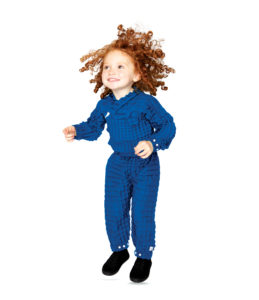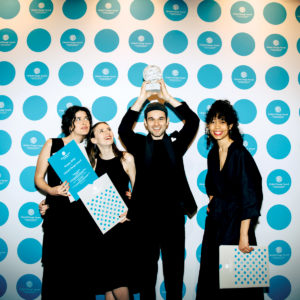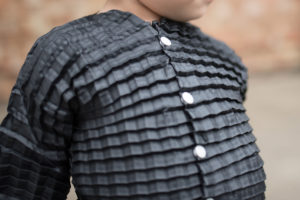With the aim to promote environmental sustainability through fashion, Petit Pli has created clothes for children that grow with them
Coming across Petit Pli as an avant-garde final year project at the Royal College of Art, London was really no surprise. It was inspiring to see an aeronautical engineer turn to art school and create something for the kids, that too clothes. The institute is known for its graduates who develop exceptional work that is often an amalgamation of art, design and technology. However, to know Petit Pli as a full-fledged operating label out of London, shipping their growing clothes around the world (including India) is a pleasant surprise.

Clothes that grow with children almost sounds magical until we see a set of pullovers and bottoms by the label. Once you see it, you know the pragmatism that went into its design that directly tackles environmental issues at hand. For Ryan Mario Yasin, the chief designer at Petit Pli, it was the experience of gifting his sister’s newborn that led him to create Petit Pli. “I bought some clothes for the baby and by the time I managed to give it to my sister, the baby has already outgrown them,” shares Yasin who sought out to solve the problem through his academic projects at the RCA.
Trips to Japan that introduced him to Japanese designer Issey Miyake’s work were a good lesson in origami-based clothing. Earlier education in aero-science made him familiar with the structure of satellite panels. These ideas influenced the design of Yasin’s textile that was heat pleated (first in his own oven) in a way that would expand widthwise when stretched lengthwise. This textile now retails at Petit Pli’s website as pullover and pants for kids that can be worn from the age of nine months to four years. How amazing is that!

As a designer, Yasin looks forward to tackling society’s consumption of clothing and problems with parts of the value chain that affect the nature of the final product we buy. With Petit Pli, he hopes to cut down the extra number of clothes bought for a child that eventually lead to reduced waste production and pollution. “If we can do anything about the utilisation of the garments that we buy, then we will be shifting towards a much more sustainable way of consuming goods,” Yasin shares the idea that forms the very basis of Petit Pli’s design.
Winning the Global Change Award (GCA) by the H&M Foundation that recognises the label’s design and efforts towards sustainable clothing, gives it the required platform and funding to experiment with recycled fibres, colours and patterns that it intended to do. In fact, the design development team includes a neuroscientist, sociologist, product designer and fashion designer that collectively work on improving the current design on offer, making it adapt to the needs of a child.
Yasin shares that his own clothing style is more of a uniform that is durable and functional. He firmly believes in sustainable living. He appreciates the work by his co-winners of the GCA, who according to him, are doing consequential work that will lead to environmental conservation.
“From being my final year project, now it is a registered label with a team in place that takes care of various aspects of the business,” says the Iceland national, who is now a CEO at Petit Pli.
The label that is still new in the business is the top-ranking result when one surfs a search engine for innovative kidswear. This may be a niche market, but Yasin’s solution to a universal problem makes it a hit among international buyers. One can directly buy from its website as it will continue to be a B2C model for a while. “There is a great response from the world over and we have delivered several pieces internationally,” assures Yasin.

The website and advertisement design are such that it helps parents from different races to imagine their kids in Petit Pli. It also ensures raising a future generation that is conscious of how even insignificant choices can make a difference in saving the environment, even before they go to school.
However, some parents have given negative feedback, which Yasin understands is only natural for a product like his to receive. Ryan is positive about all kinds of reaction that help him refine the product, but he also accepts that as innovation, Petit Pli will take some time for people to accept. It is breathable, lightweight and rainproof, with pleats that help the easy movement for the young ones as they crawl, climb and explore the world.
Yasin’s comprehension of the future of fashion involves clothing that has minimal effect on the environment. In his case, he chooses to design the same for the very next generation.





